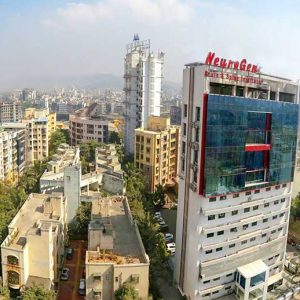US researchers are now trying to find a way to use stem cells for patients with paralysis or brain injury, for patients with type 1 diabetes, those with spinal cord injury, heart disease, people who have a heart attack or disorder neurological disorders such as multiple sclerosis. Many of the studies have been carried out on animals, and the results are in an early stage. It is important to note that the treatment with stem cells is not done with the patient’s own stem cells, because this is how the premises of the disease return are created. However, there were exceptions, proof stands a case from 2007, published in the journal Pediatric, of a child who was ill with leukemia and who was transplanted his own stem cells harvested at birth, following that 5 years after the intervention, the child to be completely healthy. Instead, it is indicated that the stem cell donors are the patient’s brother or sister. But in only 25% of cases it is shown that the brother is compatible with the patient, and 7 out of 10 patients must seek a donor outside the family.
At NeuroGen, along with cell therapy there is a strong emphasis on academic work and clinical research material on stem cell therapy. A detailed analysis of the clinical data is carried out on a regular basis and this is published in various scientific journals. We have vast repertoire of stem cell publications. Currently, 95 scientific papers have been published by our team in various international and national peer reviewed medical journals. We also have 7 chapters in International textbooks and our team has also published over 18 stem cell therapy books. Read more info Stem Cell Research & Therapy
Occupational therapists evaluate a child’s needs by testing his or her fine motor skills, perception and oral motor skills. By observing how the child responds to touch and movements, the therapist can determine a treatment plan. The treatment plan typically involves positioning, reaching, grasping and releasing. These skills are important for a child to develop the ability to be independent. Occupational therapy for children usually involves a form of play to keep them motivated. Many children with cerebral palsy have sensory impairments that make movement difficult. Our senses help us recognize changes in temperature, feel pain and to be aware of the space around us. Senses, such as touch and balance, are important for motor skills like picking up objects and walking.
The primary aim is to facilitate an overall well-being for patients suffering from incurable neurological disorders through Neuroregenerative Rehabilitative Therapy (NRRT). In addition to the above, providing support to cellular therapy research & regenerative medicine and increasing awareness about its applications are supplementary objectives. See extra details at NeuroGen Brain and Spine Institute.
A few tips to help your child with autism: Make time for fun. A child coping with ASD is still a child. For both children with ASD and their parents, there needs to be more to life than therapy. Schedule playtime when your child is most alert and awake. Figure out ways to have fun together by thinking about the things that make your child smile, laugh, and come out of her/his shell. Your child is likely to enjoy these activities most if they don’t seem therapeutic or educational. There are tremendous benefits that result from your enjoyment of your child’s company and from your child’s enjoyment of spending unpressured time with you. Play is an essential part of learning for all children and shouldn’t feel like work.
How do spinal cord injuries usually occur? A spinal cord injury is often the result of an unpredictable accident or violent event. The following can all result in damage to the spinal cord: a violent attack such as a stabbing or a gunshot, diving into water that’s too shallow and hitting the bottom, trauma during a car accident, specifically trauma to the face, head, and neck region, back, or chest area, falling from a significant height, head or spinal injuries during sporting events, electrical accidents, severe twisting of the middle portion of the torso. Source: https://www.neurogenbsi.com
